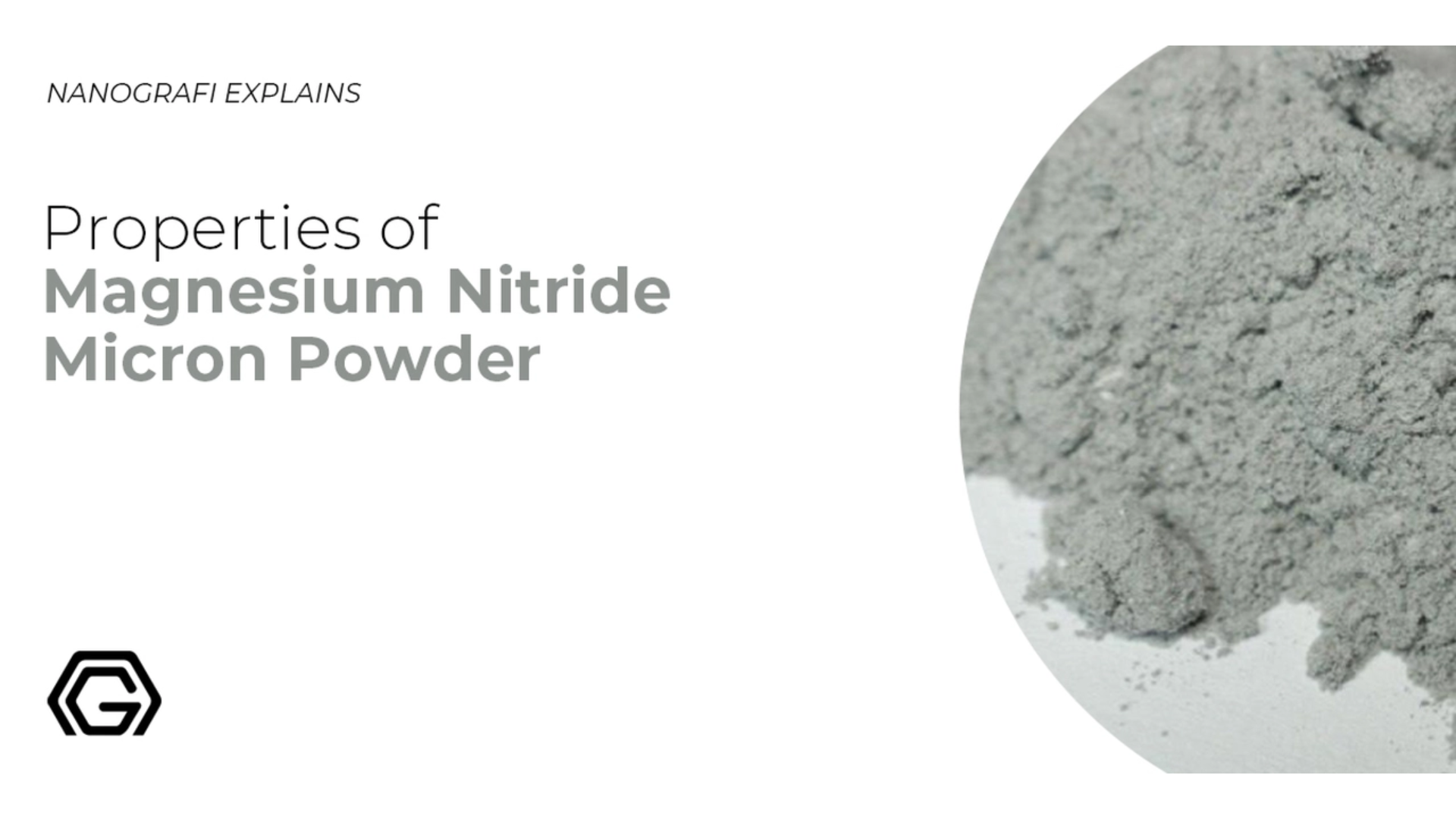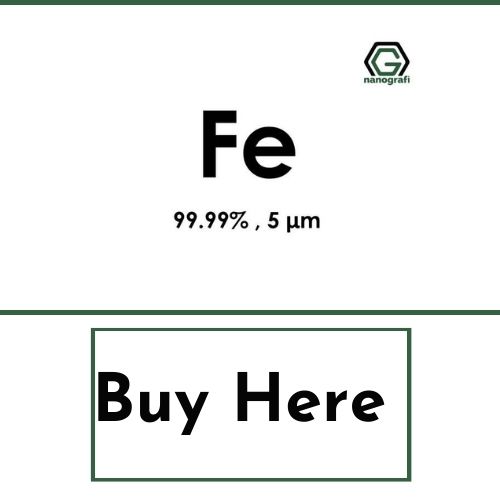Iron Micron Powder
The advancements in the field of nanotechnology is surely a great miracle of the 21st century. Along with several other nanomaterials, iron micron powder has also attracted much interest and considerations because of its unique chemical and physical properties.
Superparamagnetism, high surface area to volume ratio, greater surface area, and several others, are the unique properties of the nanomaterials. They exhibit great potential for uses in several applications across several different industries ranging from environmental protection to medical and biosciences. The iron micron powder is one such miracle of modern nanotechnology and engineering. The iron micron powder exhibits superparamagnetism, high surface area to volume ratio, greater surface area, and several others are the unique properties. It has shown great potential for uses in several applications across several different industries. It is being used for treating contaminated industrial sites and other types of ground contamination, as a colorant in glass and ceramic, catalyst, memory tapes, medical and laboratory applications, MRI and other medical applications, magnetic data storage, textiles, nanofibers, coatings, nanowires, and plastic industries.
Introduction
Nanotechnology is the science, technology, and engineering that revolves around nanoscale particles of about 1 to 100 nanometers. It is the study of extremely tiny things and their potential applications. The study has found its uses across several other scientific fields such as material sciences, biology, chemistry, physics, and engineering.
A physicist Richard Feynman started a discussion entitled "There is plenty of room at the bottom" at a meeting of American Physical Society on December 29, 1959. After a very long time, Professor Norio Taniguchi used the term nanotechnology for this new science. Feynman, in his talk, spoke about new possible ways to manipulate and control atoms and molecules of different elements. During the 1980s, a scanning tunneling microscope paved the way for the scientists to see individual atoms and hence, at last, the nanotechnology started its never-ending journey. No one knew back then that it would cause great wonders one day.
Do you wonder how small nanoparticles are? It is too small beyond our imagination. Particles of 1 to 100nm are involved in nanotechnology, and 1 nm is a billionth of a meter. Now, can you imagine how small nanoparticles are and how these tiny materials are controlled for the service of mankind? Let's share another scale to help you resolve your curiosity. One inch has 25,400,000 nanometers.
Nanotechnology is currently the area of intensive research because of the advantages of nanomaterials in a wide variety of potential applications in the biomedical, electronic field, and optics. Nanomaterials are more important and useful than bulk materials. The reason is the remarkable change in physical and chemical properties as the bulk materials are converted into nanoparticles of extremely small sizes. That is the reason that nanoparticles are the new focus of the material sciences and technology. However, there is a lot to discover because those tiny particles have a huge number of mysteries waiting for the discovery.
Nanotechnology has now impacted several fields such as medical, environmental applications, engineering, communication, materials sciences, computing, chemistry, biology, etc. Improved manufacturing processes, water purification, nanomedicines, large-scale infrastructure auto-fabrication, nutrition, better food production, energy systems, environmental protection are among the most prominent benefits of nanotechnology.
Iron micron powder is another miracle of the advancements in the field of nanotechnology. These fine particles of iron are extracted from the iron metal. Iron is among the most ubiquitous transition metal among all other transition metals. It is also the fourth most abundant element in the Earth's crust. It has now become the structural backbone of our modern infrastructure. It seems very ironic that how such an important element has been somewhat neglected so far as compared to its own oxides and other metals such as gold, platinum, cobalt, nickel, etc.
Iron micron powder's micro-particles have a large surface area that makes those nanoparticles highly reactive. They are most widely used in medical and laboratory applications. Extravagant research is also being conducted to use iron micron powder or nanoparticles to remediate industrial sites contaminated with chlorinated organic compounds. These nanoparticles also have the potential to treat several other forms of contamination, such as polychlorinated biphenyls, organochloride pesticides, and chlorinated organic solvents.
History
During prehistoric times, fine nanoparticles were once used by artisans by glassmakers and potters, including fine particles of metals. For example, the Lycurgus Cup in the British Museum and a piece of Roman Pottery near 400 after Christ is believed to contain nanosized gold. Gradually, the use of the nanoparticles and research on these materials accelerated. In 1857, Michael Faraday described for the very first time several properties of metallic nanoparticles, including optical properties. During the 1970s and 1980s, thorough studies were conducted on the nanotechnology to fully research and exploit the properties of the nanomaterials. The advancements in the field of nanotechnology are now touching the heights of brilliance. The nanoparticles and metallic micron powders are being extensively used across several industries and for research purposes.
Properties of Iron Micron Powder
Metallic micron powders and nanoparticles have fascinated researchers and scientists for more than a hundred years now. The ratio between the number of surface atoms and the number of massive atoms significantly enhances with the size reduction. That is the reason that nanoparticles exhibit unique physical, chemical, electrical, optical, mechanical, and magnetic properties. Because of these properties, they are now heavily being used in biomedical applications and engineering.
Iron, a Block D and Period 4 element are a strong, malleable, and ductile metal. Iron micron powder consists of tiny particles of iron metal. These are highly reactive materials even more reactive than the bulk material. That is the reason that puts limits on its use in inert environments. The iron micron powder also shares unique properties with all other nanomaterials.
Physical Properties of Iron Micron Powder
Iron micron powder consists of fine nanoparticles of iron. They are spherical high surface area metal nanoparticles with an average size of nanoscale. It consists of particles with typically 10-250 nanometers with surface area in the region of 30 to 50 m2/g. Iron micron powder is popular for showing facile surface modifications and have a tendency to attach with other nanostructures or nanoparticles with chemical interaction.
To get more information about microparticles,
you can read our blog post here.
Chemical Properties of Iron Micron Powder
The chemical properties of the iron micron powder almost entirely depend on the high surface area to volume ratio. A very significant quantity of energy is out there in the nanoparticles as surface-free energy. That is the reason that iron micron powder is highly beneficial for a non-oxidizing environment. Its high reactivity is also able to break the carbon-carbon bond that is one of the strongest bonds. This property to separate two carbon atoms from each other is the most coveted property of the iron micron powder across several industries because the cleavage of carbon-carbon bonds is hugely important for several numbers of industrially crucial chemical transformation.
Magnetic Properties of Iron Micron Powder
Magnetic nanoparticles are used in varied applications across several industries, such as diagnostics and bio-imaging. Another hugely important aspect of the iron micron powder is the magnetic properties of the iron nanoparticles. This property has been widely researched in the last couple of decades. The reason behind such huge research is the number of applications that can exploit the magnetic properties of the iron micron powder. Applications in areas such as medical science, biology, and spintronic greatly utilize the magnetic properties of the iron. Iron micron powder also has the potential to exhibit a unique magnetism called superparamagnetism. It is one of the most important characteristics of the nanoparticles that are only present in iron particles.
Applications of Iron Micron Powder
- Because of the ultrafine size, biocompatibility, and magnetic properties, and having superparamagnetism iron oxide nanoparticles have emerged as the most important nanoparticles used in biomedical applications such as high-resolution contrast agents for MRI, imaging, hyperthermia, targeted drug delivery, gene therapy, molecular/cellular tracking, stem cell tracking, early detection of inflammatory, diabetes, cancer, etc. All those applications strongly demand the superparamagnetism property of the iron micron powder that is useful to provide high-resolution MR images. The iron micron powder is very similar to excellent imaging probes that are used as MRI contrast agents. The reason is that the MR intensity is regulated and modulated without compromising its Vivo stability. The iron micron powder has the ability to manipulate the signal intensity of the imaged tissues by inducing a decrease in the T1 and T2 of the surrounding water protons. The scientists need homogeneous and targeted imaging probes along with ultrafine size to understand the molecular biology of the mentioned diseases. It is used as a gene carrier in gene therapies. It is also being used as magnetic sensing probes for in vitro diagnostics.
- Iron micron powder can also be used to remediate industrial sites contaminated with chlorinated organic compounds. These nanoparticles also have the potential to treat several other forms of contamination, such as polychlorinated biphenyls, organochloride pesticides, and chlorinated organic solvents.
- It is also used in textiles, nanofibers, coatings, nanowires, and plastic industries.
- The iron micron powder has also found its use in certain alloys and catalyst applications.
- Resonance imaging and magnetic data storage fields have also been using the iron nanoparticles.
Conclusion
Nanotechnology is a miraculous development in the field of science, technology, and engineering that has proved itself extremely helpful and fruitful for the whole of mankind. The nanoparticles are hugely different from the bulk materials. They are, in fact, a bridge between the bulk material and molecular structures. The bulk materials have constant physical and chemical properties regardless of the size. Conversely, the particle size of the nanomaterials determines the properties of the nanomaterials. Therefore, the properties of a material undergo a significant transition as this element is reduced to nanosize. The modern nanotechnology has revolutionized the modern world and its technology by impacting several industries. Iron micron powder is one such miracle of the advancements in the field of nanotechnology. Along with several other nanomaterials, iron micron powder has also attracted much interest and considerations because of its unique chemical and physical properties.
Superparamagnetism, high surface area to volume ratio, greater surface area, and several others, are the unique properties of the iron micron powder. It exhibits great potential for uses in several applications across several different industries. They are being used for treating contaminated industrial sites and other types of ground contamination, as a colorant in glass and ceramic, catalyst, memory tapes, medical and laboratory applications, MRI and other medical applications, magnetic data storage, textiles, nanofibers, coatings, nanowires, and plastic industries. The research is going on to find more uses of the iron micron powder for the service of mankind. It has huge potential because of its unique properties and its abundant presence in the universe.
To get more information, you can visit Blografi.
References
https://www.sciencedirect.com/topics/earth-and-planetary-sciences/iron-nanoparticle
https://en.wikipedia.org/wiki/Iron_nanoparticle
https://onlinelibrary.wiley.com/doi/abs/10.1002/smll.200500006
https://www.nanoshel.com/iron-nanoparticles-properties/
Recent Posts
-
Nanocomposites in Food Packaging
The utilization of nanocomposites in food packaging represents a significant advancement in the fiel …19th Apr 2024 -
What is the Difference Between 7075 and 6061 Aluminum Alloy?
When comparing 7075 aluminum alloy to 6061 aluminum alloy, it's essential to understand their disti …5th Apr 2024 -
Iron-Air Batteries: The Ultimate Guide
Iron-air batteries represent a significant breakthrough in energy storage technology, offering a sus …29th Mar 2024







